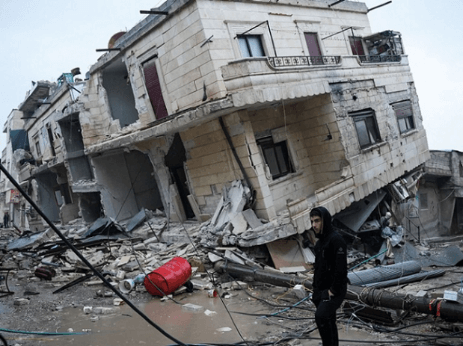Earthquake DefinitionWhenever Earth's surface shake due to the release of energy in the lithosphere layer of the planet and results in seismic waves, it is referred to as an earthquake. Earthquakes range from too weak to extremely strong can and do take place. Many earthquakes have occurred and haven't even been felt, and many have damaged many lives. An earthquake is also known as a quake, tremblor, or tremor. These earthquakes can also become a reason to cause landslides. Seismic activity refers to an earthquake's type, size, and frequency in a particular period. Whenever an earthquake's epicenter occurs on or near the offshore, it causes a tsunami. An earthquake can also be defined as a seismic event caused by either humans or nature, which results in the generation of seismic waves. Rupturing geological faults by activities such as mine blasts, volcanic eruptions, nuclear tests, etc., often causes earthquakes. Its starting point is known as the hypocenter or focus. Also, the point directly above the hypocenter on the ground is known as the epicenter. Wherever there is enough elastic strain energy stored, tectonic earthquakes occur. When talking about earthquakes, we often imagine broken land surfaces. However, it is untrue many times. Earthquakes do not always do this; whenever they do, their slip is called to create an offset. Horizontal offset is known as heave, and that vertical one is known as throw. The actual measure of a fault over time, velocity, and acceleration is known as a fling. 
Seismic EnergyThe energy produced by seismic activities is known as seismic energy. Seismic energy is spread across basically in three different ways:
P and S waves are body waves that go deep in the Earth before coming to the surface. P waves do not cause any damage or just negligible ones. S waves travel first and hold the capacity to cause damage. Surface waves cause the maximum amount of damage and travel slowly compared to others. FaultsEarthquakes occur in three different forms based on different faults. Mainly, three faults exist Normal fault, Reverse fault, and Strike-slip fault.
When combining these faults and their movements, an oblique slip takes place. Damage caused by earthquakesThere are different ways in which earthquake causes damage to people and property.
Steps to be takenOne must know the steps to protect oneself in such a disaster. A roaring sound slowly getting louder, a gentle roaring sensation growing violent over time, or extreme shaking not letting you stand indicates the onset of an earthquake. Usually, collapsing buildings and heavy materials cause fatal injuries to people, making it necessary for the population to take steps to protect themselves. Generally, the place under the study table is considered a safe spot.
Tips to remember while preparing for an earthquakeKnow the signs- It is very important to know the signs indicating an earthquake's start. Before the start of an earthquake, a roaring or rumbling sound is made, which gets louder within no time. It can also be a rolling sensation that grows violent afterward or a violent jot occurring suddenly, which after some seconds, leads to shaking, making it difficult for the beings to stand even properly. Identify the safe spots- After identifying the onset of an earthquake, it gets important to know the safe spots to reach. Place under the table is considered the best reach during such situations, or cover the head with a pillow in the absence of this best position. Create and practice plans- Always draft plans about what to do in these situations and conduct a mock drill. Adopting the proper practices might save yourself and your friends from such disasters. Create the emergency supply kit:- There needs to be enough stock of items, at least for 3 days, needed in emergencies. It should include a first aid and supply kit, water, and food. Also, there should be a proper list of important information and a folder of crucial documents like contact information, aadhar card, birth certificate, property-related documents, passport, medical information, etc. Store all your information in a waterproof folder. Tips to make sure to ready your home for such hazards
Create evacuation plansAs said earlier, there exist different strengths of earthquakes. So, you may have to leave the area in times of disastrous earthquake or if an earthquake hits so hard. Therefore, planning, creating, and practicing an evacuation plan is necessary.
Next TopicEcology Definition
|
 For Videos Join Our Youtube Channel: Join Now
For Videos Join Our Youtube Channel: Join Now
Feedback
- Send your Feedback to [email protected]
Help Others, Please Share










